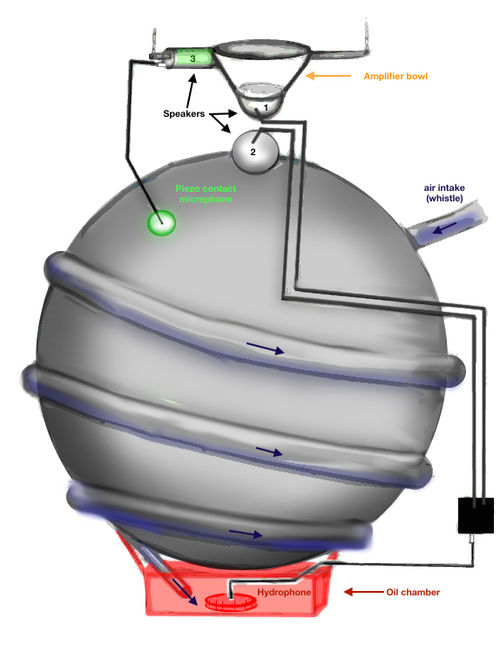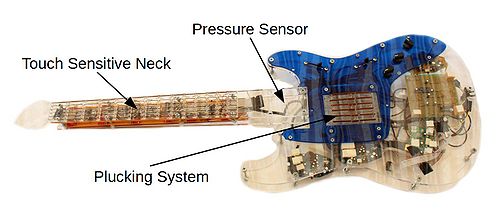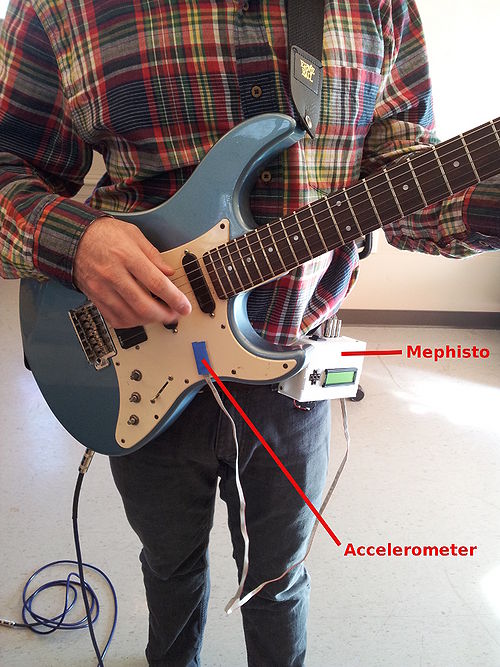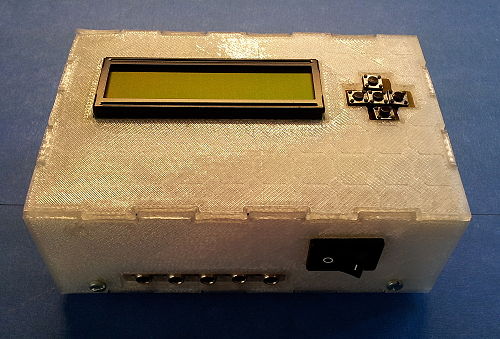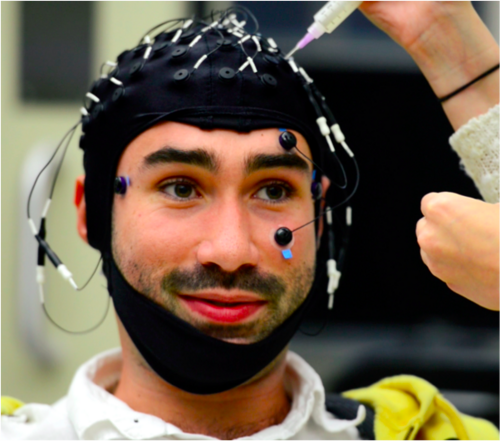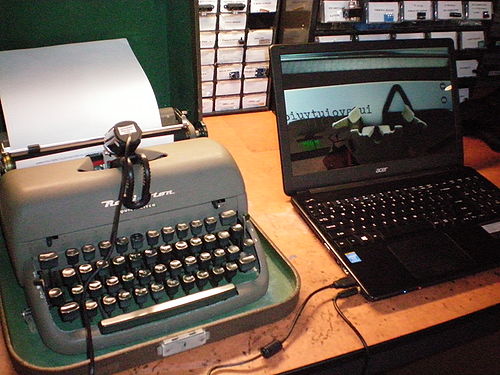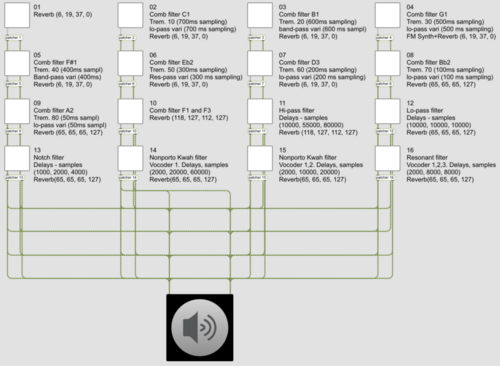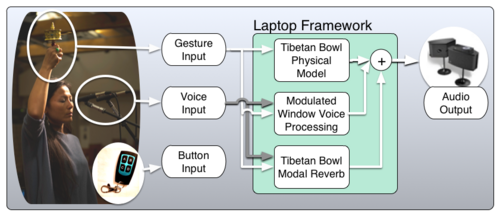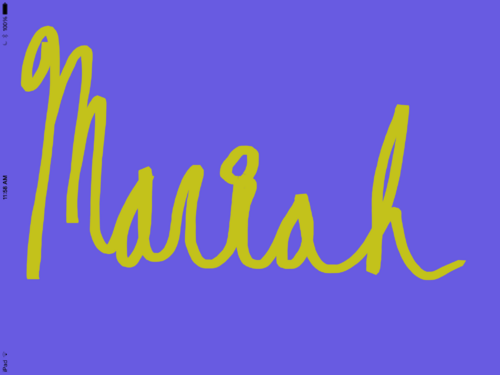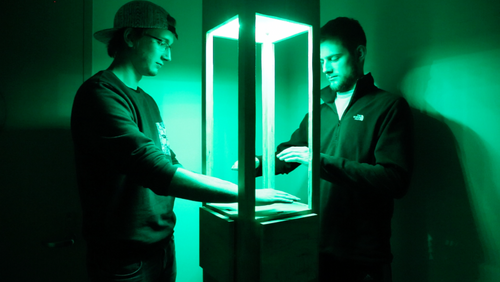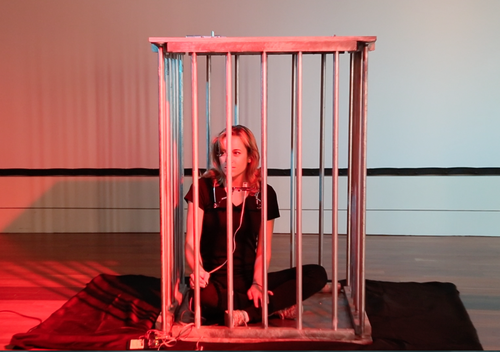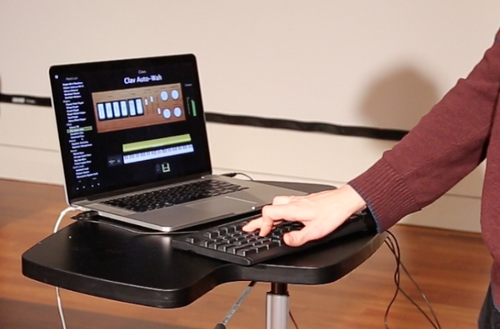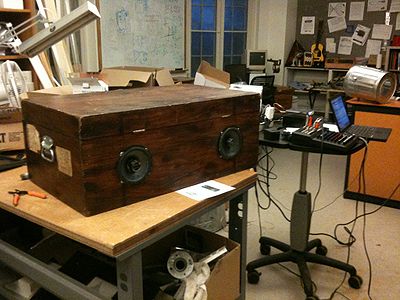MakerFaire2015
Contents
Introduction
The Center for Computer Research in Music and Acoustics (CCRMA -- pronounced "karma") is an interdisciplinary center at Stanford University dedicated to artistic and technical innovation at the intersection of music and technology. We are a place where musicians, engineers, computer scientists, designers, and researchers in HCI and psychology get together to develop technologies and make art. In recent years, the question of how we interact physically with electronic music technologies has fostered a growing new area of research that we call Physical Interaction Design for Music. We emphasize practice-based research, using DIY physical prototying with low-cost and open source tools to develop new ways of making and interacting with sound. At the Maker Faire, we will demonstrate the low-cost hardware prototyping kits and our customized open source Linux software distribution that we use to develop new sonic interactions, as well as some exciting projects that have been developed using these tools. Below you will find photos and descriptions of the projects and tools we will demonstrate.
Cetacant
Alison Rush
The cetacant is a musical instrument inspired by whales and designed to accompany a performance of Vela 6911, a piece by Victor Gama. The cetacant emulates features of the cetacean vocal apparatus, using tubes and chambers full of air, water, and oil to produce and amplify sounds. The attached photo is of a prototype; the instrument's final form will resemble a suspended sphere, evoking the bubbles produced by a vocalizing whale, or our watery planet as seen from space.
The Blade Axe
Romain Michon
The BladeAxe is a guitar-like controller that uses "real world" audio excitations from six piezoelectric films (one per "string") to drive a physical model of a guitar on a laptop. The BladeAxe body is made out of laser cut acrylic sheets and can be easily reproduced. As a fully "plug and play" interface, it can be used on any computer to communicate with our open-source virtual-guitar software.
Mephisto
Romain Michon
Mephisto is a small battery powered open source Arduino based device. Up to five sensors can be connected to it using simple 1/8" stereo audio jacks. The output of each sensor is digitized and converted to OSC messages that can be streamed on a WIFI network to control any Faust generated app. The goal of Mephisto is to provide an easy way for musicians to interact with the different parameters of a Faust object or any other OSC compatible software during a live performance. As a "DIY" open source project, Mephisto only uses open source hardware (Arduino, etc.) and was designed to be easily built by anyone.
Hearing Polyphony - A Game and Experiment!
Madeline Huberth
I work in the Neuromusic lab at CCRMA, whose goal on the whole is to investigate phenomena related to understanding music. Specifically, I've been doing work this past year in how our brain processes polyphony (hearing multiple melodies at once), and will present a game I created that uses the stimuli used in our experiment as a way of understanding the experiment. The experiment and our findings will also be on a poster that I can bring.
Our experiment shows that your brain can detect changes in polyphonic patterns automatically - how easy is it for you to do it consciously? Play and find out!
CollideFx
Chet Gnegy
CollideFx is a real-time audio effects processor that integrates the physics of real objects into the parameter space of the signal chain. Much like in a traditional signal chain, a user can choose a series of effects and offer realtime control to their various parameters. In this work, we introduce a means of creating tree-like signal graphs that dynamically change their routing in response to position changes of the unit generators. The unit generators are easily controllable using the click and drag interface and respond using familiar physics, including conservation of linear and angular momentum and friction. With little difficulty, users can design interesting effects, or alternatively, can fling a unit generator into a cluster of several others to obtain more surprising results, letting the physics engine do the decision making.
The Processed Typewriter
Andrew Watts
Other than the human voice, musical instruments convey primarily abstraction through sound content. We interpret these sounds as music to varying degrees, but if one were to step away from the cultural associations, the noise would remain highly ambiguous. With a typewriter the sounds inherent in the machine's use also contain linguistic meaning. Having this added layer to work with, a composer could pair the text and the sounds in a multitude of ways, even utilizing the ambiguity of semantic meaning with the ill-defined meaning of typewriter sounds. For this project I am specifically thinking towards a performance in the late spring during a residency with famed soprano Tony Arnold. Rather than a typical accompaniment for a solo soprano piece, like as a piano, it would be much more interesting and musically fertile to have her singing lyrics which are actively being typed in the background. Not only is the text being transformed into sound through the vocal line, but also the hammering away of the typewriter. Furthermore, these sounds and the images of the text appearing on the page would be processed, enabling a wide range of articulations, imagery, references, and audio sculpting.
String
Joshua Coronado
String is controller used to generate waveforms, curves, and envelopes using a camera, coloured string, and Max/MSP. Users draw curves representing objects such as a filter envelope using coloured string. The coloured curve is then captured by a camera and deciphered into a digital curve to be rendered out to audio by Max/MSP.
Tibetan Singing Prayer Wheel
Yoo-yoo Yeh
Inspired by the traditional Tibetan prayer wheel and Tibetan singing bowl, we present the Tibetan Singing Prayer Wheel, a physical motion sensing controller that allows you to play virtual Tibetan singing bowls as well as processes your voice when you perform several gestures - spinning the wheel at different speeds, raising and lowering your arm, and tapping a button on the outside. A separate RF transmitter allows you to transition between the three distinct sound design layers: (1) a Faust-STK physical model of a Tibetan singing bowl, (2) a delayed and windowed voice processing layer, and (3) a novel modal reverb model of an actual Tibetan singing bowl, that takes the voice as input. The system is designed to be easy for anyone to pick up and improvise with - go ahead and try it!
Mariah
Mathew Horton
Mariah sonifies the "diva finger wave." Mariah is a letter of love to women like Whitney Houston, Christina Aguilera, and its namesake, Mariah Carey. Simple draw on the screen with your finger and sing a note. Instant riffs and trills just like the great divas of the 80's, 90's, and 00's!
But the amazing, unexpected outcome of creating Mariah was a really interesting feedback instrument. Mariah takes in audio, pitch shifts it, and plays it What you end up with at low levels of sounds is a "self-generating" feedback instrument that creates some really crazy effects.
Hill
Mathew Horton
Hill is a software application for musical and visual accompaniment of spoken word poetry. It is inspired by the minimalist video game, Mountain, as well as Lauren Zuniga's poem, "World's Tallest Hill". Hill builds a scene through which the text of a poem can move. The view of the scene can shift, and depending on the particular place at which the scene is viewed, the accompanying audio is transformed in different ways. Hill allows users to "compose" an accompaniment for a poem by adhering to a sort of "score."
Tower of Power
Graham Davis, Connor Kelley
Tower of Power (ToP for short) is an interactive tower of wood that generates sound and sweet LED's. Inspired by the Hunchback of Notre Dame and 1970s funk, ToP is the auditory column for our generation. Tact is a project designed to make sound design and beat construction more intuitive. The instrument is a glove mounted with contact microphones that allows the wearer to record, transform and perform natural sounds at the touch of a finger. A wireless iPad interface provides the wearer with sound-shaping controls, playback effects and glove feedback. Amplify your interaction with the world via tactile sampling and contact playback with Tact. String is controller used to generate waveforms, curves, and envelopes using a camera, coloured string, and Max/MSP. Users draw curves representing objects such as a filter envelope using coloured string. The coloured curve is then captured by a camera and deciphered into a digital curve to be rendered out to audio by Max/MSP.
Sonic Anxiety
Victoria Grace, Joel Chapman
Sonic Anxiety is an ironic twist on performance anxiety, where the performance is the sound of my anxiety while locked in a cage. Sensors track my breathing to control the harmony and timbre while my pulse sets the pace and drum rhythms of the piece.
lovelyStepSequencer
Micah Arvey
3 dimensional step sequencer.
Velokeys
Austin Whittier
Velokeys is a velocity-sensitive QWERTY keyboard for desktop jamming. Millions of people spend every day training their brains with a QWERTY key layout – at work, at school, and at home. This project is meant to meld the expressivity
Busk Box
Sasha Leitman
The Busk Box is a street performance system that combines the traditions of wandering street performers and musicians with the modern technologies. Inside of a 1911 wooden trunk, 2 6" speakers, 1 10" subwoofer, 2 class-T amplifiers and a portable mixer are all powered by lithium-ion batteries. In addition, the box is supported by folding wheels and legs which enable the box to be set up and torn down in less than 3 minutes. This platform was designed to bring experimental and electronic music to the San Francisco Fisherman's Wharf district.

